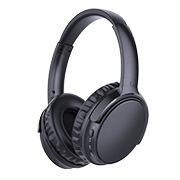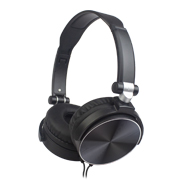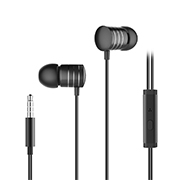
- factory address
D Building,Pioneer Park,3rd Industrial Zone Fenghuang Village, Fuyong Town,Baoan DistrictShenzhen,Guangdong,China
The importance of headphone Sensitivity and impedence
Sensitivity
Headphone sensitivity may be measured in dB/mW or dB/V. Sensitivity is a measure of how effectively an earpiece converts an incoming electrical signal into an audible sound. It thus indicates how loud the headphones will be for a given electrical drive level. It can be measured in decibels of sound pressure level per milliwatt, or dB SPL/mW, which may be abbreviated to dB/mW. The sensitivity of headphones is usually between about 80 and 125 dB/mW.
These are dB SPL (sound pressure level) measured in a standard ear for a 1 kHz sinusoidal headphone input of either one milliwatt or one volt. One can convert between these two units if the impedance of the earpiece is known.
Impedence
In recent years, impedance of newer headphones has generally decreased to accommodate lower voltages available on battery powered CMOS-based portable electronics. This results in headphones that can be more efficiently driven by battery powered electronics. Consequently, newer amplifiers are based on designs with relatively low output impedance.
Headphones are available with low or high impedance (typically measured at 1 kHz). Low-impedance headphones are in the range 16 to 32 ohms and high-impedance headphones are about 100-600 ohms. As the impedance of a pair of headphones increases, more voltage (at a given current) is required to drive it, and the loudness of the headphones for a given voltage decreases.
The impedance of headphones is of concern because of the output limitations of amplifiers. A modern pair of headphones is driven by an amplifier, with lower impedance headphones presenting a larger load. Amplifiers are not ideal; they also have some output impedance that limits the amount of power they can provide. In order to ensure an even frequency response, adequate damping factor, and undistorted sound, an amplifier should have an output impedance less than 1/8 that of the headphones it is driving (and ideally as low as possible). If output impedance is large compared to the impedance of the headphones, significantly higher distortion will be present. Therefore, lower impedance headphones will tend to be louder and more efficient, but will also demand a more capable amplifier. Higher impedance headphones will be more tolerant of amplifier limitations, but will produce less volume for a given output level.
Historically, many headphones had relatively high impedance, often over 500 ohms in order to operate well with high impedance tube amplifiers. In contrast, modern transistor amplifiers can have very low output impedance, enabling lower impedance headphones. Unfortunately, this means that older audio amplifiers or stereos often produce poor quality output on some modern, low impedance headphones. In this case, an external headphone amplifier may be beneficial.



















